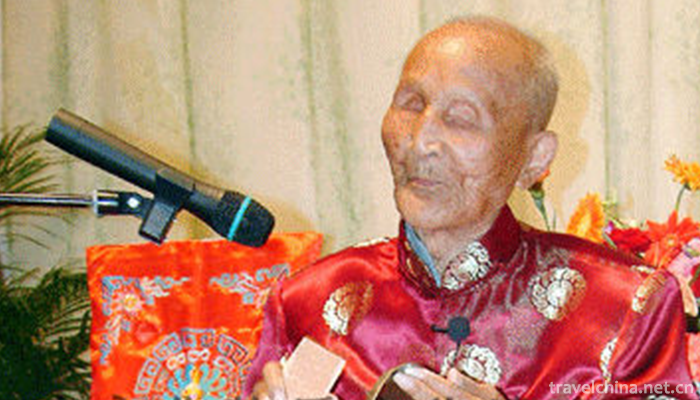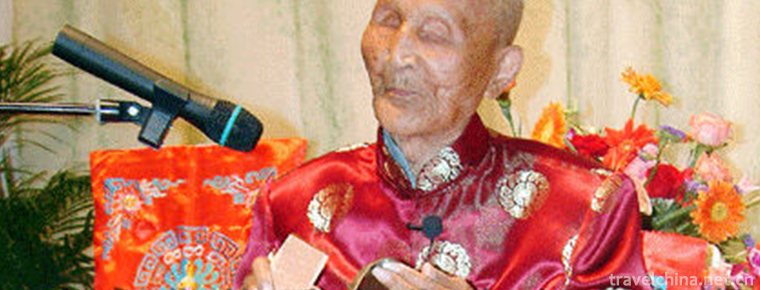Sing the news
Sing the news
Singing news is a traditional local opera popular in eastern Zhejiang, especially in Fenghua, Beilun, Zhenhai, Yinzhou and Xiangshan. Singing news has a long history, about a hundred years ago. In the Southern Song Dynasty, there were blind people singing "Hao Bao" (official news), which later evolved into singing social news.
On May 23, 2011, the "Singing News" declared by Xiangshan County of Zhejiang Province was listed in the third batch of national intangible cultural heritage list with the approval of the State Council.
historical origin
produce
One way of saying is that singing news originated in the late Ming Dynasty and evolved from the official news of singing "Chao Bao". Legend has it that in the old days, people were less literate, and official laws, obituaries, notices, etc. even if they were posted in prominent places, they saw less, understood less, and conveyed poorly. Some wise people have come up with a way to bring together River and lake artists, especially blind artists, to add tunes to the official news and select people to sing in a lively place. However, if the solo news is not attractive enough or the performance time is not long enough, the artists will compile popular stories into paragraphs and sing them in front of the news.
Development
Another argument is that singing news developed from rural farmers singing "Tiantou Mountain Song" when they were working.
Historical evolution
Singing news is a popular type of social news in eastern Zhejiang, especially in Yinzhou, Zhenhai, Beilun, Fenghua and Xiangshan of Ningbo. Blind artists are handed down from generation to generation, and the specific age is difficult to check. It was popular in Zhenhai for more than one hundred years.
In the 1950s, there were about forty or fifty artists engaged in news singing in Zhenhai District, mostly blind. Among them, the more famous rappers are Yan Meifang, Gu Ahuo and others. The content of their singing is some ancient and modern stories and popular tunes circulating in the streets and lanes of Zhenhai. When singing, the artist holds a drum pole and Gong pieces in his right hand, carries a gong in his left hand and a small drum on his leg. While singing, he taps drums or gongs rhythmically with drumsticks or gongs.
Before liberation, singing news was a very cheap profession. Blind artists had to walk the streets and cross villages to sing. They categorized the forms of singing: singing a few songs and short books in the courtyard of the residential wall, pocketing a few money, called "singing gate head"; singing for passengers on the ferry boat, called "singing boat head"; singing at the opening of the fair, called "singing lamp head"; singing big books, relatively high level, into the bookstore, called "singing ground", only a few artists have "singing ground". This treatment.
artistic characteristics
content
"Singing News", also known as "Three North News", evolved from singing the official news of the "Hamburg".
Later, they mainly sing social news. They usually perform in sunning grounds, streets, temple fairs and wharfs. According to different places, they call singing halls, lights, doors and boats respectively. The accompaniment is also very simple, just a small gong, a flower drum or a big cake drum, a board can be.
The content of news is mostly ancient and modern stories and popular tunes circulated in local streets and lanes, singing in local slang. While singing, the artist holds a drum pole and Gong pieces in his right hand, carries a gong in his left hand, and holds a small drum on his knees. While singing, he taps the drum shell or Gong rhythmically with a drum mallet or Gong piece.
form
Its singing forms are as follows: first, singing doorways, that is, singing a few ditties along doors, similar to begging; second, singing a paragraph or a time in the public courtyard and the open hall, carrying a few dollars; third, singing boats, which are more popular in the water network area, selling them in day and night boats; fourth, singing lamp heads, singing at temple fairs and fairs; fifth, singing halls, which are able to sing big books and relative water. Pinggao folk artists sing in the bookstore, but few.
Most of the news is sung by one person, but also by two people. Its accompanying instruments include drums, gongs and bamboo slabs. News bibliography can be divided into two categories: one is small bibliography, also known as the opening book, such as "Bachelor Tune", "Health Care", "Tour the Wharf" and so on, but also useful minor singing social news. The other is a large bibliography, also known as the master book, including "Three Counties and Trial", "Broken Mandarin Duck", "Nail Shoes" and so on.
Inheritance significance
Singing news has been compiled into Ningbo Quyi Chronicle published by Ningbo Publishing House in 1998 and Ningbo Traditional Quyi Works Selection published in 2006 (Comprehensive Quyi Volume). "Singing News" props simple, a flower drum, a gong, singing venue without any restrictions; most artists are blind, the cost of performance is very low, the content of singing is popular news and stories; the lyrics are pure slang, so it is very popular. But its inheritance is not so optimistic. Inheritance in protection and innovation in inheritance should not make "singing news" a "singing feat".


-
1.Mixed Congee
Eight treasures, also known as Laba porridge, porridge, Chinese traditional festival food. It is a gruel made from a variety of ingredients in Laba. Chinese scholars in the Southern Song Dynasty
Time 2018-11-02 -
2.Wenchang chicken
Hainan Wenchang chicken, special product of Wenchang City, Hainan, China national geographical indication product.
Time 2018-11-05 -
3.qingming riverside landscape garden
Qingming Shanghe Garden is a large Song Dynasty cultural theme park constructed by the people's government of Kaifeng City in Henan Province
Time 2018-12-09 -
4.Jizu Mountain Scenic Spot in Binchuan
Jizu Mountain is located in a cave-making area about 20 kilometers west of Binchuan County, Yunnan Province, 90 kilometers away from Dali City. It is named for its three peaks in the front and a ridge
Time 2019-01-03 -
5.Yuexiu Park Guangzhou
Yuexiu Park is the largest comprehensive park in Guangzhou. The main body of Yuexiu Park is Yuexiu Mountain. In the Western Han Dynasty, Zhao Tuo, the king of South Vietnam, was named after the "
Time 2019-01-13 -
6.Mao Zedongs former Residence
Comrade Mao Zedong's former residence is located in Shaoshan Village, Shaoshan Township, Shaoshan City, Hunan Province. It is located in the South and north of Shaoshan Village
Time 2019-02-07 -
7.Chishan Scenic Area Shidao
Chishan Scenic Area of Shidao, located in the Shidao Management Area of Rongcheng City, the easternmost end of Shandong Peninsula, is a national 4A-level tourist attraction
Time 2019-02-08 -
8.Lishui drum words
Lishui Drum Ci is a popular rap art in Liandu and its surrounding areas in Lishui City, Zhejiang Province. Lishui Drum Ci originated from the Tang Dynasty. During the reign of Emperor Li Shimin, it wa
Time 2019-05-13 -
9.Man Han tune
Han Han tune. Chinese translation means desert tone. A form of folk songs. Mainly popular in Mongolia and Han mixed Yikezhao League Zhungeer Banner, Dalat Banner and Baotou City Tumut Right Banner, Ho
Time 2019-05-21 -
10.stone carving
Stone carving refers to the use of various carvable and carvable stones to create a visible and touchable artistic image with a certain space, in order to reflect social life, express the artist's aes
Time 2019-06-15 -
11.Sichuan Minzu College
Sichuan College for Nationalities is a full-time general undergraduate college in Sichuan Province. It is also the only national undergraduate college in Kangba Tibetan District. It is located in Guza
Time 2019-08-31 -
12.Meishan mineral resources
There are 25 kinds of minerals in Meishan, mainly including coal, natural gas, iron, copper, lead, zinc, manganese, placer gold, glauberite, gypsum, bentonite, phosphorus, dolomite, cement limestone, magnesite, granite for facing, vein quartz, crystal, quartz sandstone,
Time 2020-12-18